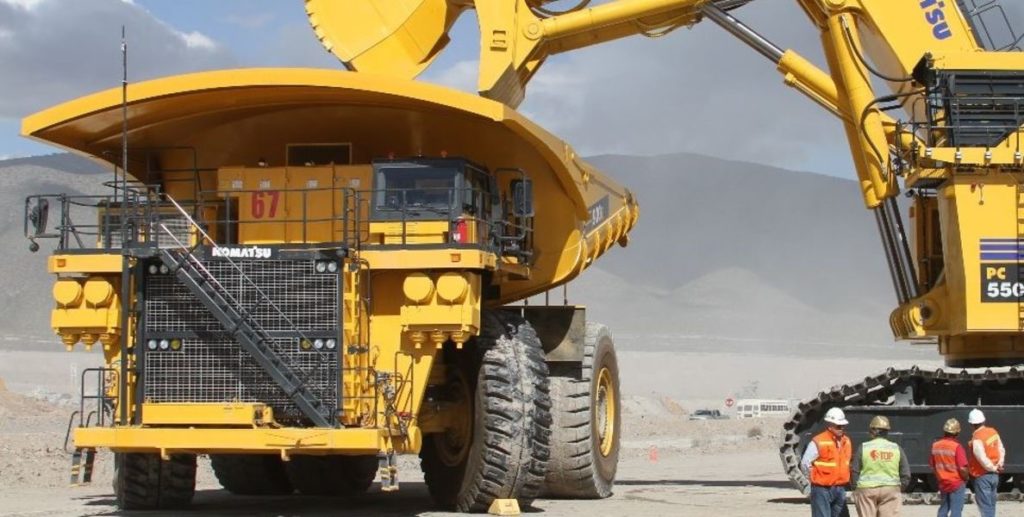On a recent investor site tour, the management team at Newmont’s Penasquito gold mine emphasised the massive potential of the mine to become “the next Boddington” but also gave some detail about efforts in the near term to transform the operation by eliminating constraints, reducing costs and increasing productivity, collectively referred to as its Full Potential Process covering exploration, processing, mining and tailings storage.
It is the largest gold mine, second largest silver mine and one of the largest producers of zinc and lead in Mexico. It is also a low-cost gold operation with significant co-product revenue. The mine is expected to produce an average of 1.6 million gold equivalent ounces per year for the next five years (2020-2024).
The mine is 780 km northwest of Mexico City, in the state of Zacatecas. It has two open pits –Peñasco and Chile Colorado. A sulphide processing plant produces lead and zinc concentrates. Concentrate tailings are processed through the pyrite leach circuit to extract additional gold and silver. It has a world class mining fleet operating: five Caterpillar 495HR electric rope shovels, two Komatsu PC8000, one PC5500 and one Hitachi EX2500 hydraulic shovels, and two Komatsu WA1200 wheel loaders. The truck fleet working includes 79 Komatsu 930Es, four Cat 777s. It operates six Epiroc Pit Viper PV351s (of which four are fully autonomous), five PV271s (of which four are autonomous), plus four FlexiROC D65s as well as a range of crawler dozers, water trucks graders etc.
But this is where the cost efficiency element comes in as on top of these machines there are a number currently parked, as part of the mine’s Full Potential Process: two WA1200 wheel loaders, four 930E trucks, six 777 trucks and two PV351s.
The mine is now focussed on designing initiatives, implementation plans and KPIs for tracking delivery of the mine’s full potential. Asset health monitoring is being used to improve fixed plant and mobile equipment reliability through real-time monitoring from the Denver operational support hub. Advanced process control is helping to improve productivity and achieve cost efficiencies through proactive identification and resolution of processing constraints. Exploration wise, there is now a focus on near mine exploration in Full Potential improvements delivering Resource to Reserve conversion, leveraging exploration expertise and technology and increasing spend on underexplored, highly prospective areas. At a district level, the mine is applying Newmont’s proprietary technology to uncover geologic anomalies including geophysical deep sensing and visualisation methods such as gravity, magnetic 3-D inversions and passive seismic as well as deploying more geochemical exploration methods.
Looking in more detail on the processing side, the mine has identified targets including debottlenecking the augmented feed circuit, optimising the SAG control logic, increasing zinc filtering capacity, improving flotation circuit performance and improving blast fragmentation. KPIs include upping throughput by 6 Mt/y and flotation recovery by 0.5%. Together it is estimated this will save $154 million a year. Moving on to mining intiatives these include improve loading and haulage, where necessary equipment shutdowns as detailed above, improved drilling and dig patterns and again improved blast fragmentation. The actual KPIs here are detailed as electric shovel productivity by ~500 tpoh (tonnes per operational hour), haul truck productivity up by ~25 tpoh, improved dig pattern allowing for around 1.5% lower dilution and improved drill patterns switching from 2D to 3D designs. Cited annual benefit here is $49 million per year.
Asset management drivers include optimising the maintenance schedule, improving mill availability and aligning maintenance schedules. KPIs include mill unscheduled downtime getting 1% lower, mill scheduled downtime 0.5% lower and flotation cells average maintenance at 10 days less. Here annual savings are estimated at $9 million a year. But perhaps the most interesting entry is for initiatives in “external spend” where the company says at a global and regional category it is working “to buy better and spend better” as well as looking at inventory optimisation and getting the best result from global contract negotiations. KPIs here include an inventory $45 mllion reduction, savings in OEM equipment negotiations of $10 million, global category management savings of $12-$18 million in 10+ negotiations and lastly “non-OEM heavy mobile equipment” of $4 million. Overall savings for this external spend area – $40 million per year.
IM asked Newmont what was meant by this “non-OEM” reference to which a company spokesperson replied: “What it relates to is total cost of ownership initiatives that are evaluating savings when purchasing parts and/or components from 3rd party suppliers. This may entail purchasing lower-cost parts/components that are of like quality and performance instead of purchasing directly from OEMs.”
Looking into the mining Full Potential initiatives the mine has already shut down the near-pit sizing conveyor saving $20 million and the parked excess fleet has saved $8 million, with the shut down of other equipment saving $3 million. The operation has also established best practice in ore control. Priorities for this year include efficient haulage through reducing travel and queue times, efficient loading through increased double-sided loading, improving fragmentation to support crushing and milling initiatives, improved design of drill patterns and increased compliance for digging patterns as well as improving fragmentation to support crushing and milling initiatives.











